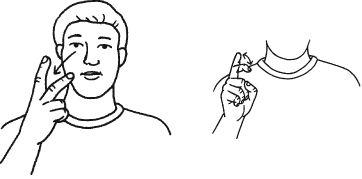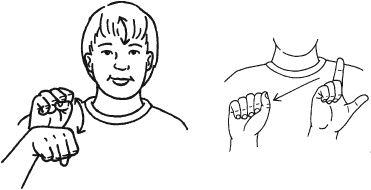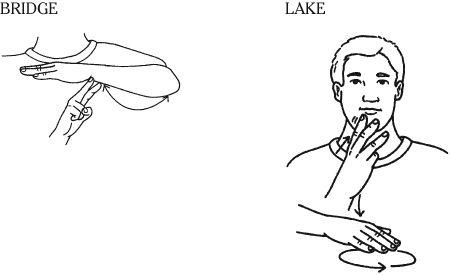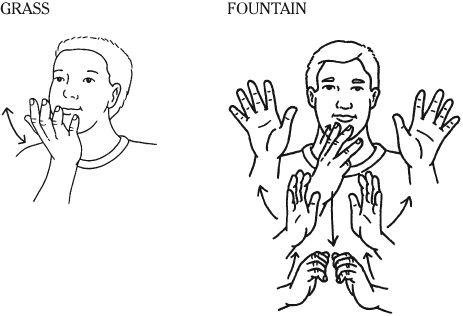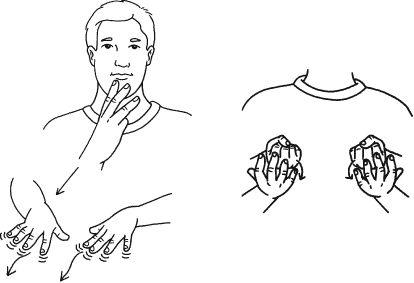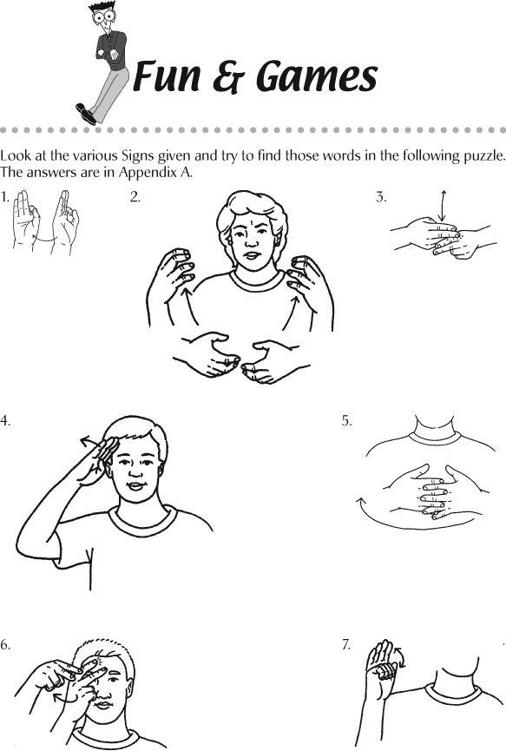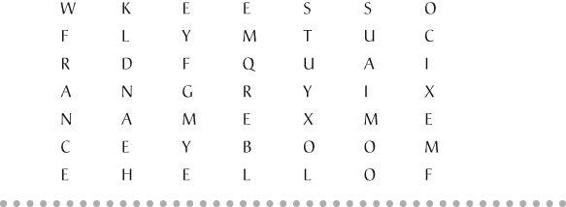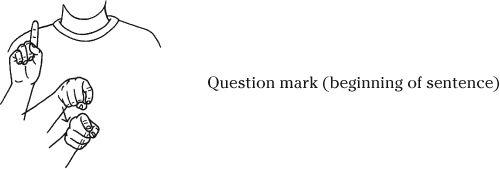Read Signing For Dummies Online
Authors: Adan R. Penilla,Angela Lee Taylor
Signing For Dummies (19 page)
Angie:
Will you see Chip?
Sign:
C-H-I-P SEE — Q
Tim:
Yes, Chip’s in LA.
Sign:
YES — C-H-I-P LA
Describing locations
Locations add the details to what you’re signing. Details are the key to clear and precise conversation. The following location descriptions will help:
Signin’ the Sign
Dee and Ted are in Japan. They’re in awe of the beautiful country and are sharing their feelings about the experience.
Dee:
The trees are beautiful in Japan.
Sign:
JAPAN — TREES — BEAUTIFUL
Ted:
The mountains are so high.
Sign:
MOUNTAINS HIGH
Dee:
There are so many rivers.
Sign:
RIVERS — MANY
Chapter 4: Getting to Know You: Asking Questions and Making Small Talk
In This Chapter
Hearing people get to know each other by asking questions and making small talk. ASL is no different. You start with the basics and build from there. This chapter shows you how to converse with your family and friends in the silent language by giving you the Signs for various questions, for getting addresses and phone numbers, and by letting you know how to use pronouns instead of names. Showing ownership (possessives) is covered, too. Making small talk needs questions, Signs, and some basic information on talking about family, yourself and, of course, home and work. This chapter is a sure bet to get you signing in no time.
Signing Key Questions: Six Ws, One H
When you want to sign a question, you simply put the question word at the end of the sentence — words such as
who, what, when, where, which, why,
and
how.
In this section, we explain these key Signs first, and then we show you how to ask questions, putting those question Signs at the end of the sentence. After you sign your question, as a rule, you sign the manual question mark repeatedly — the manual question mark you use at the
end of a sentence
is shown below.
Throughout this book, the letter
Q
follows all ASL examples and dialogues that are questions. Use the end of sentence manual question mark when you see the letter Q in this book.
You also have the option of placing the question mark at the beginning of the sentence.
As you sign the question word, lean forward a little, look inquisitive, scrunch your eyebrows together, and tilt your head to one side.
Your dominant hand — the one that you write with — does the action.
Always maintain eye contact. That way, you and the other person can make sure that you understand one another.
You sign the following inquiry words at the beginning or at the end of a sentence.
